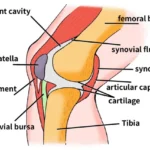Cold weather can pose unique challenges to arm health, particularly for those who suffer from conditions like arthritis, or experience stiffness and discomfort due to the drop in temperature. Proper management of your arm joints and muscles is essential to prevent injury, reduce pain, and maintain mobility. This article explores a range of strategies to support arm health during the colder months, including tips for staying active, maintaining joint flexibility, and preventing injuries.
Keep Your Arms Warm
One of the most important ways to protect your arms from cold weather is to keep them warm. Cold temperatures can lead to muscle stiffness, reduce blood flow to extremities, and increase joint discomfort. Here’s how you can protect your arms:
- Wear Layers: Dress in loose, layered clothing to trap heat. Start with a moisture-wicking base layer, followed by insulating fabrics like fleece or wool, and finish with a waterproof outer layer.
- Use Heating Pads: Applying heat to your arms through heating pads or hot water bottles can help alleviate stiffness and improve blood circulation, promoting muscle and joint health.
- Compression Garments: Compression sleeves or gloves can keep your muscles warm while also providing support, which is particularly beneficial if you have arthritis.
Stay Active with Gentle Exercises
Exercise is essential for maintaining arm strength and flexibility, but cold weather can make joints feel stiff and painful. Here are some activities to keep your arms in good condition:
- Stretching: Start your day with light stretching exercises to warm up your arm muscles. Stretching helps to loosen stiff joints and improve flexibility.
- Low-Impact Exercises: Indoor activities like yoga or Pilates are excellent for maintaining arm strength without putting stress on your joints. Swimming in a heated pool can also provide a full-body workout that strengthens your arms without impact stress.
- Regular Movement: Avoid sitting still for too long in cold weather, as this can exacerbate stiffness. Make an effort to move around regularly and use light weights or resistance bands to engage your arm muscles.
Hydration and Nutrition
Proper hydration and nutrition play a vital role in maintaining joint health during cold weather. Here’s what you can do:
- Hydration: Cold weather can mask the body’s need for hydration, but staying well-hydrated is crucial for keeping muscles and joints flexible. Drink plenty of water, herbal teas, and warm fluids throughout the day.
- Anti-Inflammatory Foods: Include foods rich in Omega-3 fatty acids, such as salmon and walnuts, to reduce inflammation in your joints. Antioxidant-rich fruits and vegetables, like berries and spinach, can also help fight oxidative stress.
- Vitamin D: In winter, natural sunlight is scarce, making it important to take Vitamin D supplements to support bone health, which can impact your arms if you experience joint pain.
Adjust Your Exercise Routine for Cold Weather
Adapting your workout routine during cold weather can help you stay active while preventing injury:
- Warm-Up and Cool-Down: A thorough warm-up before exercising is crucial in winter, as cold muscles are more prone to injury. Take 5-10 minutes to do light cardio, such as marching in place, and then stretch your arms. After your workout, cool down to prevent muscle stiffness.
- Indoor Exercise Options: When the weather is too cold to exercise outdoors, switch to indoor activities. Home workouts using resistance bands or light weights are excellent for arm conditioning. Stretching and yoga are also great for maintaining flexibility.
Protect Against Cold Weather Injuries
Cold weather can make your muscles and joints more susceptible to injury, so it’s important to take precautions:
- Wear Protective Gear: Gloves, mittens, and arm warmers can keep your hands and arms warm, reducing the risk of frostbite or cold-related injury.
- Mind Your Surroundings: If you do exercise outdoors, ensure that paths are clear of ice or snow to prevent slips and falls, which can lead to sprains or fractures in your arms.
- Strengthen Muscles Gradually: Cold weather can lead to muscle stiffness, so don’t push yourself too hard. Build up the intensity of your workouts gradually to avoid strain on your arms.
Massage and Heat Therapy
Massage therapy is a great way to relax your arm muscles and increase circulation, especially during cold weather. You can visit a professional massage therapist or use self-massage techniques at home. Heat therapy can also relieve tension in your muscles and joints, improving overall arm mobility.
Frequently Asked Questions (FAQs)
- Why do my arms feel stiffer in the cold weather? Cold temperatures reduce blood flow to extremities, which can cause muscles and joints to feel stiff. This is particularly noticeable in individuals with arthritis or joint issues, as the cold can exacerbate pain and stiffness.
- What are the best exercises to keep my arms healthy during winter? Gentle stretching, yoga, and light resistance training are great exercises for maintaining arm health in cold weather. Low-impact activities like swimming in a heated pool can also help keep your muscles flexible without stressing your joints.
- How can I prevent arm pain in the winter? To prevent arm pain during cold weather, stay active, wear appropriate layers, and use heating pads or hot water bottles to keep your muscles and joints warm. Ensure you are properly hydrated and incorporate anti-inflammatory foods into your diet.
- Should I change my workout routine during cold weather? Yes, cold weather may require adjustments to your workout routine. Start with a longer warm-up, focus on indoor activities if the weather is too cold, and gradually build up the intensity to avoid overworking cold muscles.
- How does hydration impact arm health in winter? Hydration helps maintain joint flexibility and muscle function. Even in cold weather, your body requires water to support healthy blood flow and nutrient delivery to your muscles and joints, so it’s important to stay hydrated.
- Can heat therapy help with winter-related arm stiffness? Yes, heat therapy can be very effective in managing stiffness and pain during cold weather. Applying heat improves blood circulation and relaxes muscles, making it easier to move your arms without discomfort.
Conclusion
Maintaining arm health during cold weather requires a combination of warmth, proper hydration, regular exercise, and protective measures against injury. By keeping your muscles and joints active and well-supported, you can prevent stiffness, reduce pain, and enjoy healthy arm movement throughout the winter months.





